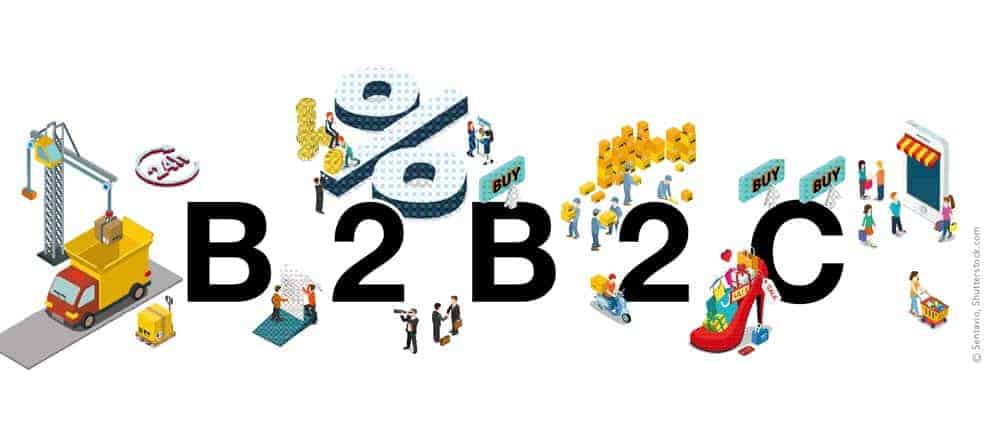Blurring the Line Between B2B and B2C


Online trade in the B2B sector is growing steadily. According to recent studies and surveys, 74 percent of companies expect half of all B2B purchases will be made online in 2025. Furthermore, ever more young people are the buyers; on average, customers are under 35 years already.
Next-generation customers are used to a different standard than customers from ten years ago. They mostly shop online, and consequently expect the same customer experience in B2C as in B2B. This means that companies have to significantly improve B2B customer experience if they want to remain competitive.
B2B much more complex than B2C
Purchases in B2B and B2C have distinctly different motivations. In B2C, customers are inspired by the customer journey and can decide instinctively. In B2B, customers don’t decide if they want to buy something, they just decide where to buy something. They have a task, and they want to accomplish it as quickly as possible. Purchases in this sector are mostly reorders. Deciding instinctively is not an option.
B2B providers are therefore faced with numerous challenges rooted in the complexity of this sector. This includes partial orders, complicated discount systems, follow-up orders, and providing data in real time. Customers expect something more than a simple catalogue. They expect a search bar, product details on demand, and data in real time. However, buying a machine with 20 different configurations is fundamentally different than buying a cardigan or a video game. B2B companies do not only have to appeal to customers, they also have to offer them a practical and comfortable solution.
Recognizing the importance
Solutions enhancing customer experience are therefore in demand in the B2C as well as in the B2B sector. SAP serves as an example: in November 2018, it bought Qualtrics, pioneer in experience management software. Especially B2B companies have not yet unlocked the full potential of the internet. Game changers like Amazon B2B or Alibaba resolutely shift the focus on customer experience in their solutions. Consequently, they are able to replace established players in only a short time.
These B2B marketplaces offer smaller companies the possibility of increasing their online reach and find new customers. Some major companies like Siemens Mobility have already recognized the importance of customer experience in B2B. With Easy Spares Marketplace, a marketplace for spare parts of trains, Siemens wants to simplify procurement of spare parts for its customers.
Michael Bitsch, Head of eBusiness at Siemens Mobility Customer Services, explains, “Everyone who’s B2B customer is also B2C customer. Therefore, we all know how easy and fast purchasing can be. To transfer this experience to B2B transactions was our main objective.”
B2B equals B2C?
Despite the obvious differences, there is one similarity between the two sectors: the customer. B2B should learn from B2C, because customers’ wishes and needs are not so different in both sectors. Companies need to recognize that behind every purchase and every customer journey, there’s a human—whether it is B2C or B2B. Pioneers like Bryan Kramer are advocating this very sentiment with the hashtag #H2H. They want people to move away from B2B, B2C, or even B2C2B, and to move towards H2H: Human to Human.







